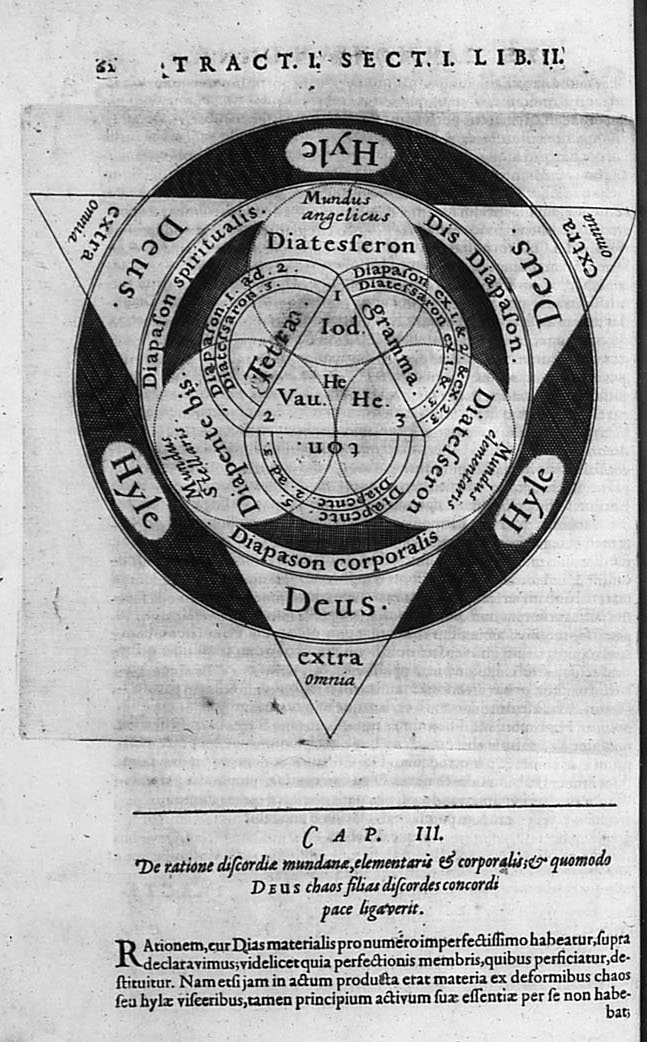The Square (into circles)
Below is Fludd's illustrated version of the progressive creation of the macrocosmos.
Why is the created cosmos a circle? Because Mercurius Trismegistus says God's creative light turned back on himself (a hermetic, theological reason) [cf: p.49, below]. In a later diagram (at the very bottom of this page), Fludd labels the space outside of the circle of the cosmos extra omnia = outside of everything. So then why does the primordial nothing begin as a square? The answer is technical, not theological. The hyle must seek and attempt to exceed the very edges of media representation, and in Fludd's case, those edges happen to be a square copperplate. Why square? Because paper pulp dries most readily on a wire mesh grid. Because the etching must fit on the horizontal page. Because it is more cost-effective to cut a flattened copperplate into squares than into circles. All these material processes and histories are now brought into view once the medium is hypertrophied. But Fludd purposefully and immediately cordons off all these material affects and excesses with his text border (Et sic in infinitum), returning us to the realm of linguistic meaning-making, lest the material get out of hand.To zoom out and get a macrocosmic view of the progressive creation of the macrocosm, keep pressing [command and -] (on a mac) or [control and -] (on a pc). To return to the original scale, press [command and 0] (on a mac) or [control and 0] (on a pc).
[The link forward to the next web page is at the bottom.]















